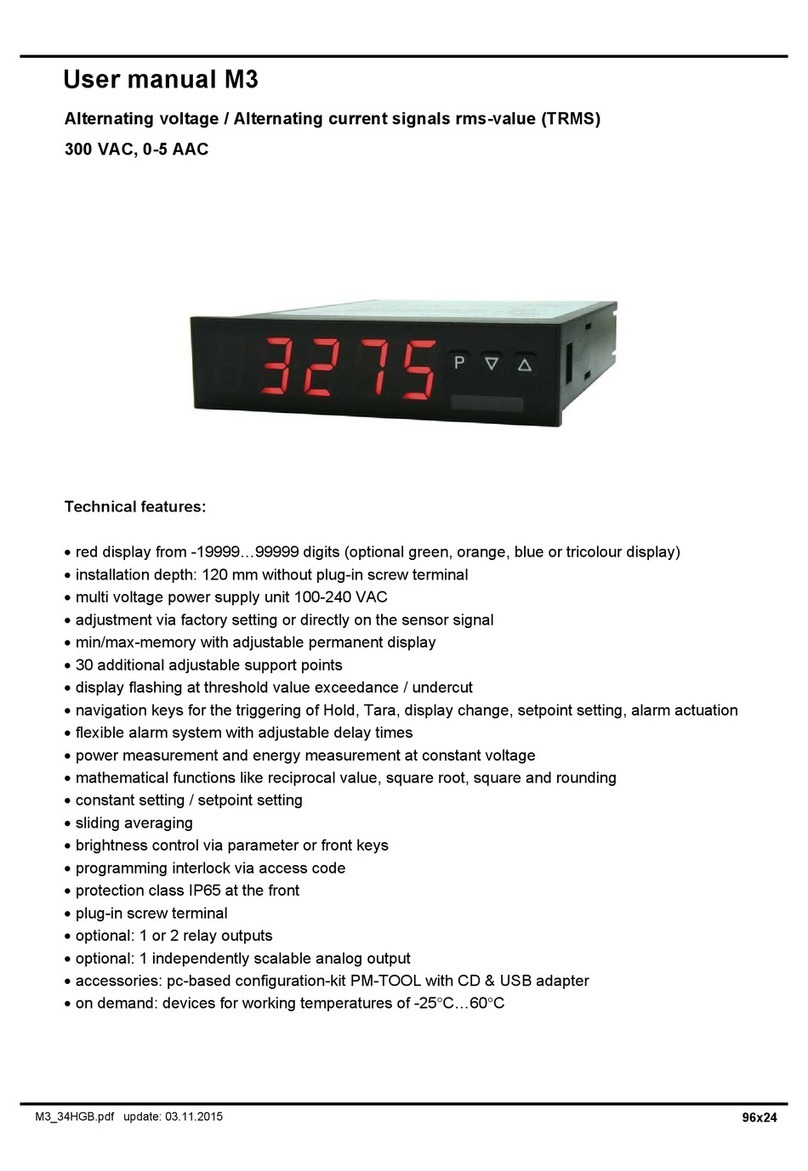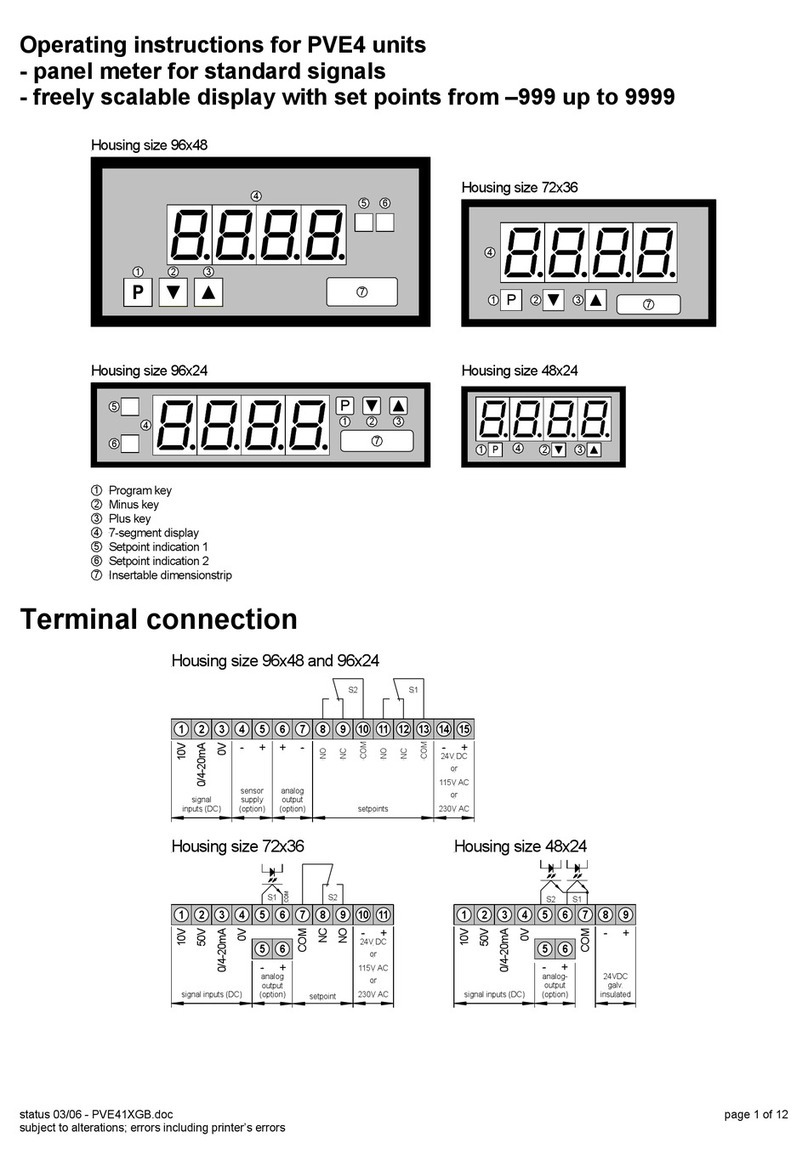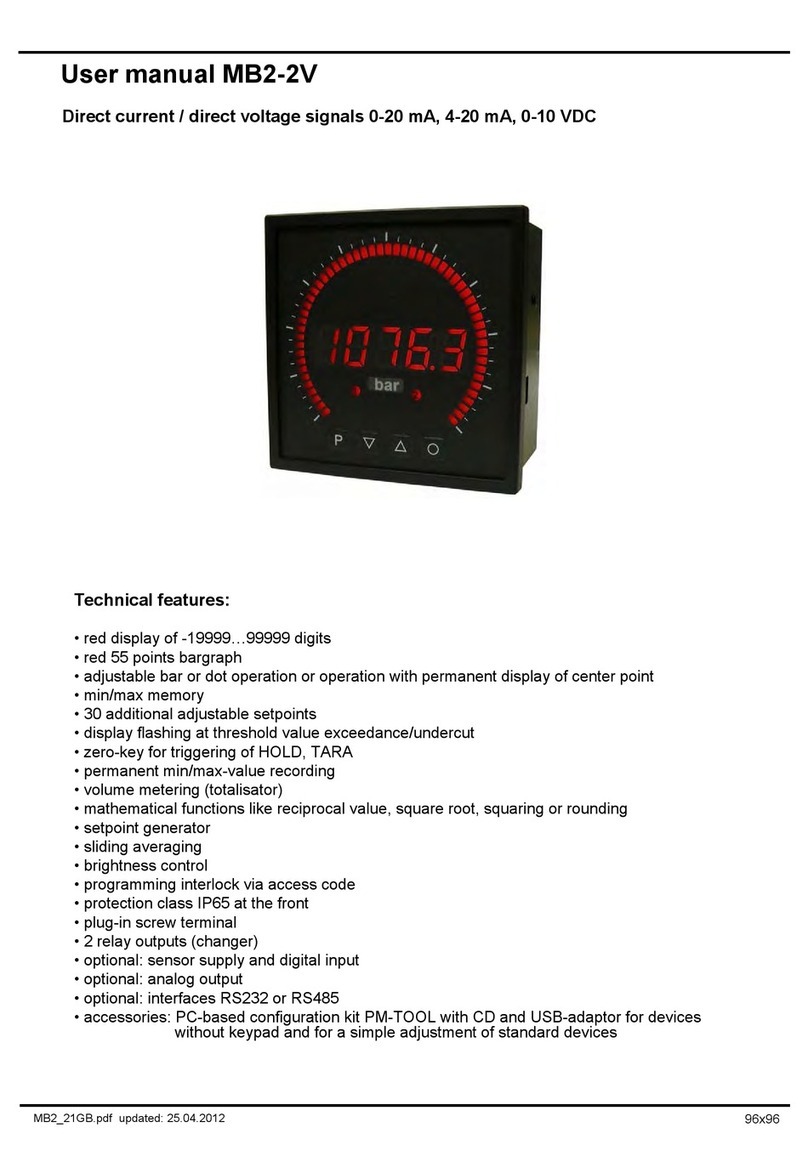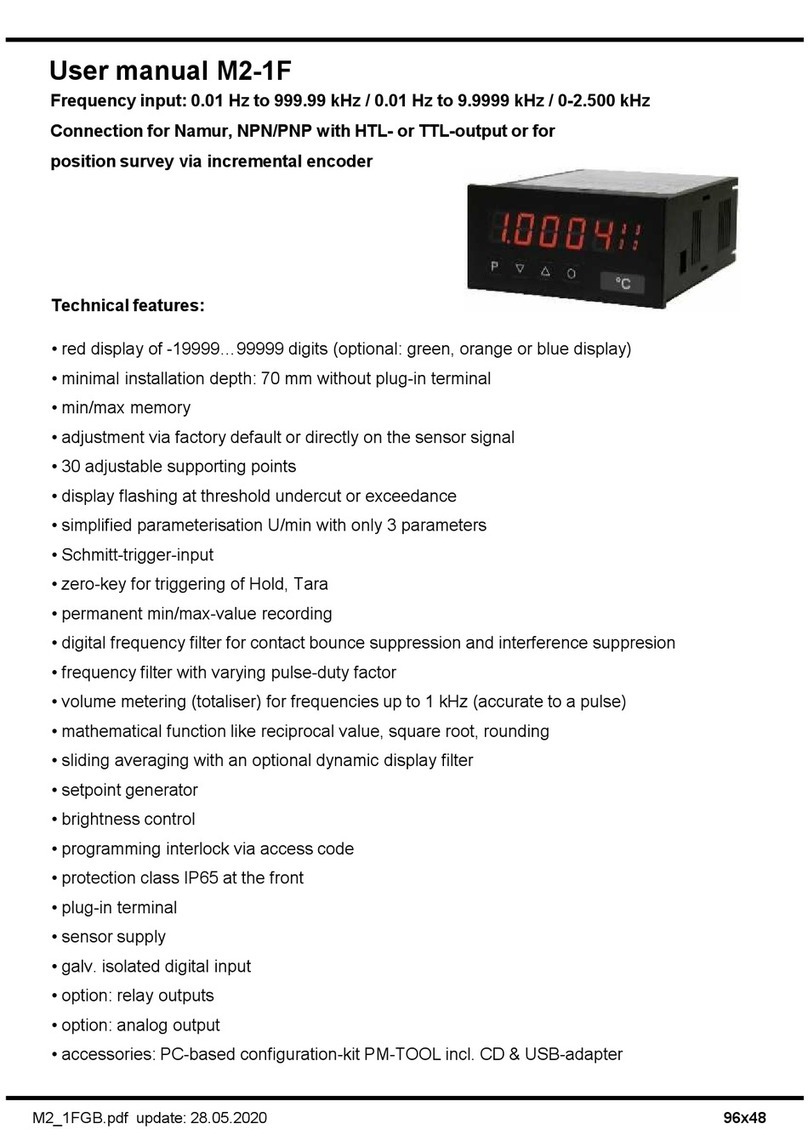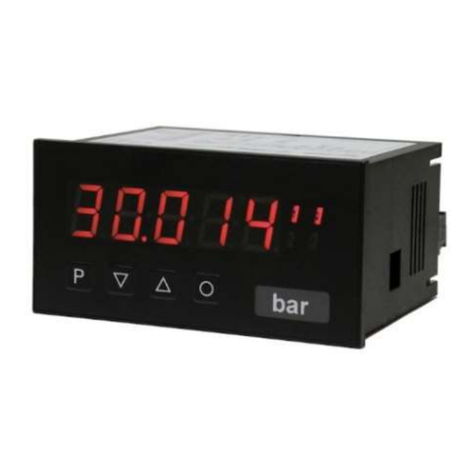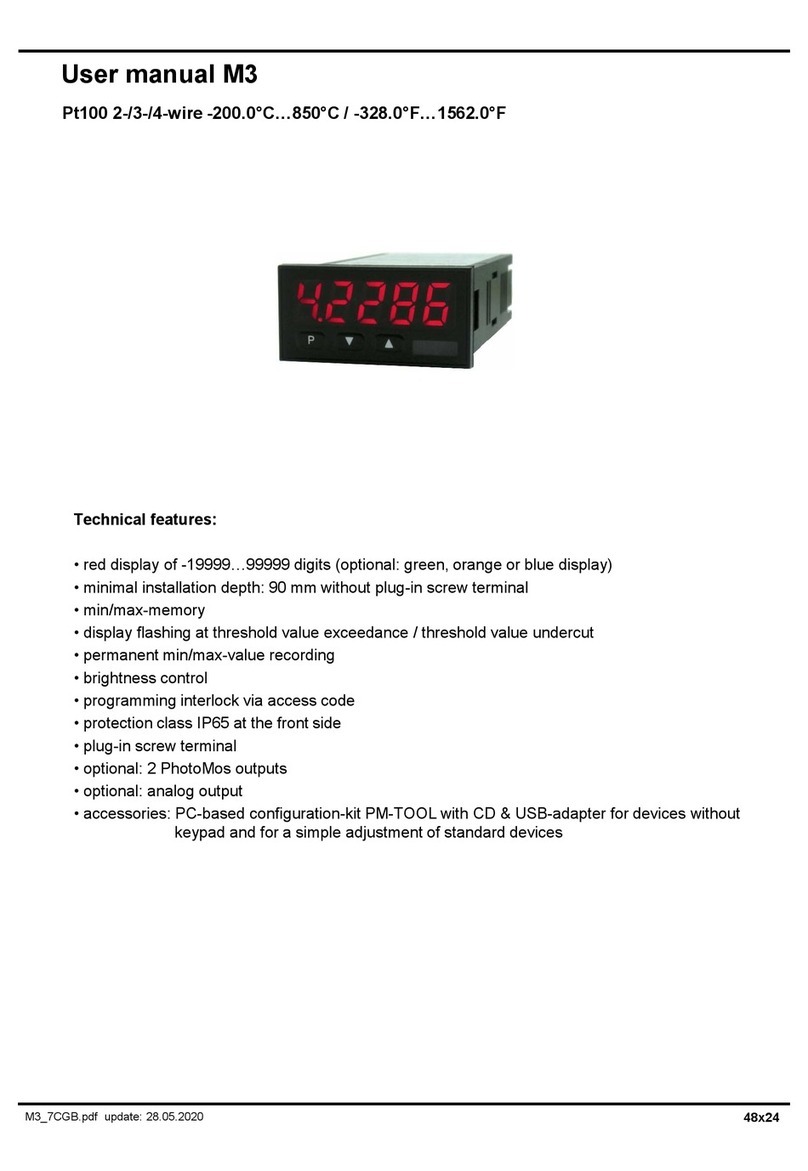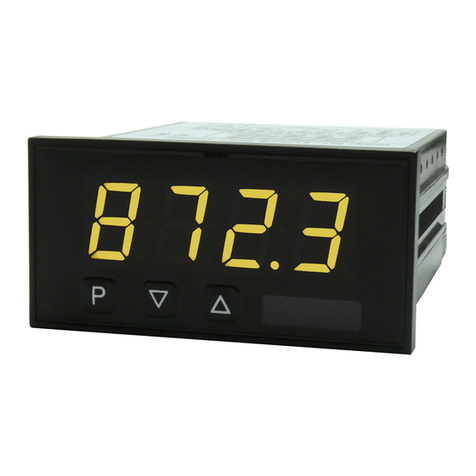
1. Brief description
2
1. Brief description
2. Assembly
Please read the Safety advices on page 37 before installation and keep this user manual for future reference.
Sealing
Installation depth including plug-in terminal
(depth depends on options)
145,0 (154,0)
96,0
24,0
Gap for physical unit
3,0
1. After removing the fixing elements, insert the device.
2. Check the seal to make sure it fits securely.
3. Click the fixing elements back into place and tighten the clamping screws by hand. Then use a
screwdriver to tighten them another half a turn.
CAUTION! The torque should not exceed 0.1 Nm!
The dimension symbols can be exchanged before installation via a channel on the side!
2. Assembly
The panel meter M3-3F can evaluate pulses in many different ways and show the result in the 5-digit LED-
display. Available options are: frequency coverage with optional filters, summate of pulses or display values via
time, detection of a rotational speed or collection of a position via an incremental encoder. The results can be
monitored via alarm conditions and can be displayed onto the optional switching point. Furthermore the results
can be freely scaled on an optional analog output and relayed to a control system. The device can be operated
directly by Namur sensors, 3-wire sensors, switching/slider contacts, incremental encoders (HTL-/TTL-output)
or TTL-signals.
Via the 3 navigation keys on the front, the device can be adjusted onto different kind of applications and later on
different functions of the device can be controlled. The adjustment is also possible via the PC-Software PM-
TOOL with a special connecting cable. With an individual code, the created parameterisation can be protected
against changes of the user.
Numerous applications can be realised with this device, like e.g. tachometer, revolution counter, flowmeter,
dosing equipment, filling capacity meter, baking time meter of a baking oven, flying knife, position evaluation,
position surveillance, flow rate surveillance, acoustic discharge measurements and so on. By use of the
integrated, configurable functions like permanent min/max-recording, averaging, frequency filter, setpoint
setting, threshold value recording via alarm system, 30-points-linearisation, mathematic charging and many
more, you receive an universal applicable modern instrument for your demands in measuring and control
technique.

